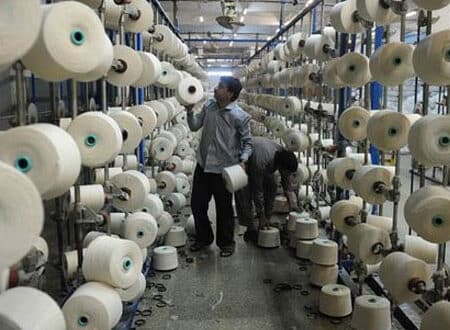
Pakistan Institute of Development Economics
- Home
Our Portals
MenuMenuMenuMenuMenuMenuMenu - ResearchMenuMenuMenuMenuMenuMenuMenu
- Discourse
- The PDR
- Our Researchers
- Academics
- Degree Verification
- Thesis Portal
- Our Portals

Drawbacks of the Duty Drawback
The textile sector has the potential to be the backbone of Pakistan’s manufacturing-led growth. The government must continue to undertake necessary policy measures to revive the industry. As highlighted by Dr. Ahmed Waqar in his recent blog, textile sector exports are on the rise, following introduction of a Regionally Competitive Electricity Tariff (RCET) for zero-rated sectors. Dr. Waqar rightly points out that the sector still faces many other hurdles. These include policy inconsistency, inferior quality raw material especially cotton and energy related issues needing urgent redressal by the government. While some issues require long-term solutions, we can solve our energy problems by extending RCET immediately. This decision would be based on existing data, and evidence from current research.
PIDE’s Report shows our textile sector used this RCET to boost value-added textile exports in the last 18 months. Early mover advantage during the initial COVID-19 lockdown period also helped boost textile sector exports. The focus now should be on ensuring that this upward trend of our exports continues. The only way to not lose our market share is to maintain the price competitiveness achieved through RCET introduction. We must extend this regionally competitive tariff for a further period.
While RCET has proven to be beneficial for the textile sector and its exports, there are calls for removing it. The proposed replacement is a Duty Drawback on Local Taxes and Levies (DLTL) scheme for only exporter-oriented units. This suggestion does not appear to draw on existing knowledge of the ground realities of industries. It will undoubtedly reverse all the recent progress made by textile sector since introduction of RCET.
Introducing DLTL will immediately increase the cost of production. Prices will be raised as energy costs will have immediately increased in the industry. This will automatically make the industry uncompetitive among the regional players and result in losing market share. If the textile industry still manages to export its products, the time costs attached with DLTL payments will prove harmful. Manufacturers have not received rebates from the government for the past 7 years (2014 onwards). Rebate liabilities paid have only been from the mid-1990s. This means that multiple firms had to wait between 10 to 20 years to receive their rebates. The entire process ends up being disadvantageous for the firms as well as creating a massive trust deficit.
Assume, by virtue of some magic wand, we can remove the inefficiencies of the DLTL payment. Firms and government will both have to bear additional documentation costs. This will require firms to maintain records of all their export quantities and prices for submission to government agencies, and those government agencies will also have to create a data catalogue for audit and approval purposes. As a result, the industry and government both will incur additional monetary and time costs attached to the process.
Besides, low levels of vertical integration in the textile industry means with introduction of DLTL scheme the upstream industry will significantly suffer. As only export oriented units will be eligible to claim the rebates through DLTL, upstream industry which sells most of its product in the local market will automatically suffer. Removal of RCET and illegibility for the DLTL will force the upstream industry to increase the prices of its products. Eventually, for the downstream industry, importing raw material will prove more beneficial than buying locally from upstream manufacturers. Naturally this will push the upstream manufacturers who have low exports and minimal local sales to the brink of closure.
In conclusion, replacing RCET with DLTL will make the textile industry of Pakistan regionally uncompetitive while also forcing upstream textile sector towards closure. Instead, the government must work on reducing inefficiencies in our energy sector so we can ensure a smooth supply of electricity at low rates to all, including manufacturers. Lacking a more beneficial alternative, continuation of RCET is a no-brainer, and we must reject any calls for its removal.
Ed. Note: This is the second in a series of blogs highlighting key findings from recent research at PIDE. The main research study is available from PIDE’s website.
Download full PDF


